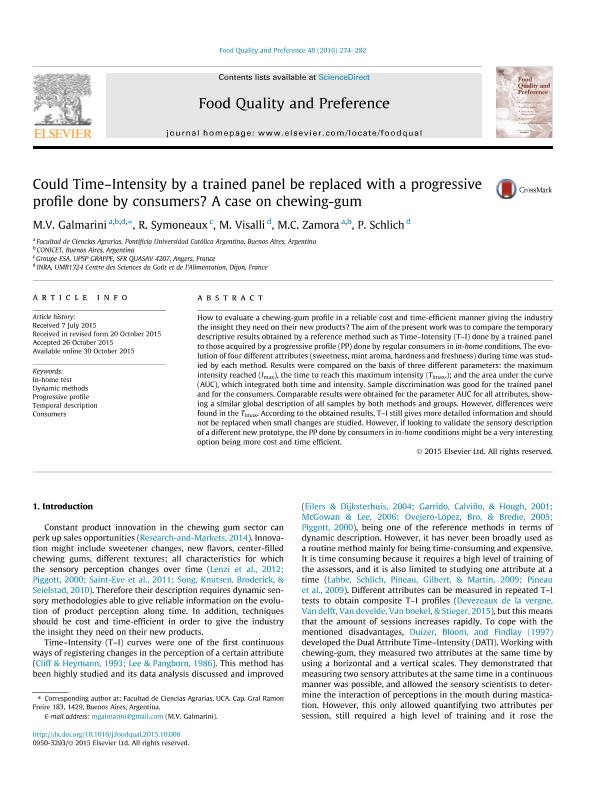Artículo
Could Time–Intensity by a trained panel be replaced with a progressive profile done by consumers? A case on chewing-gum
Fecha de publicación:
03/2016
Editorial:
Elsevier
Revista:
Food Quality and Preference
ISSN:
0950-3293
Idioma:
Inglés
Tipo de recurso:
Artículo publicado
Clasificación temática:
Resumen
How to evaluate a chewing-gum profile in a reliable cost and time-efficient manner giving the industry the insight they need on their new products? The aim of the present work was to compare the temporary descriptive results obtained by a reference method such as Time?Intensity (T?I) done by a trained panel to those acquired by a progressive profile (PP) done by regular consumers in in-home conditions. The evolution of four different attributes (sweetness, mint aroma, hardness and freshness) during time was studied by each method. Results were compared on the basis of three different parameters: the maximum intensity reached (Imax), the time to reach this maximum intensity (TImax,); and the area under the curve (AUC), which integrated both time and intensity. Sample discrimination was good for the trained panel and for the consumers. Comparable results were obtained for the parameter AUC for all attributes, showing a similar global description of all samples by both methods and groups. However, differences were found in the TImax. According to the obtained results, T?I still gives more detailed information and should not be replaced when small changes are studied. However, if looking to validate the sensory description of a different new prototype, the PP done by consumers in in-home conditions might be a very interesting option being more cost and time efficient.
Palabras clave:
In-Home
,
Dynamic Methods
,
Progressive Profile
,
Temporal Description
,
Consumers
Archivos asociados
Licencia
Identificadores
Colecciones
Articulos(SEDE CENTRAL)
Articulos de SEDE CENTRAL
Articulos de SEDE CENTRAL
Citación
Galmarini, Mara Virginia; Symoneaux, R.; Visalli, M.; Zamora, María Clara; Schlich, P.; Could Time–Intensity by a trained panel be replaced with a progressive profile done by consumers? A case on chewing-gum; Elsevier; Food Quality and Preference; 48; 3-2016; 274-282
Compartir
Altmétricas




